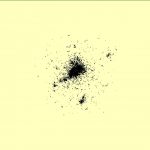A Statistical-Mechanical Perspective on Site Fidelity – Part IIX
The power law expansion of observed space use in the Multi-scaled random walk model (MRW) shows a non-trivial relationship with sample size N of spatial relocations (fixes). In this post I introduce imaginary numbers to resolve more precisely what I have called the apparent paradox of the time-independent inwards/outwards expansion with increasing N, as it emerges both from the spatial and the temporal aspect of the process. This novel development hopefully contributes to the continued bridge-building between biophysics and space use aspects of behavioural ecology. The inwards/outwards expansion in the MRW model is popping out of the Home range ghost formula I (N) ≈ c √N (Gautestad and Mysterud 2005), where incidence, I , is the total area of fix-containing virtual grid cells. As verified repeatedly both theoretically and empirically, I (N) is not simply a statistical small-sample size artifact, but an emerging property of the...


